When I was preparing to travel to Spain, I really had no idea what kind of food I would be eating. All I would hear was tapas, tapas, tapas… and I didn’t even know what that meant. Hint: it really just means smaller portions (yes, it makes me sad, too). Lucky for me, I have a wonderful host mom who spends her days cooking up a storm for my roommate and me and cleaning up after us (shout out to Blanca), but not all food is created equal in Spain.
Pizza
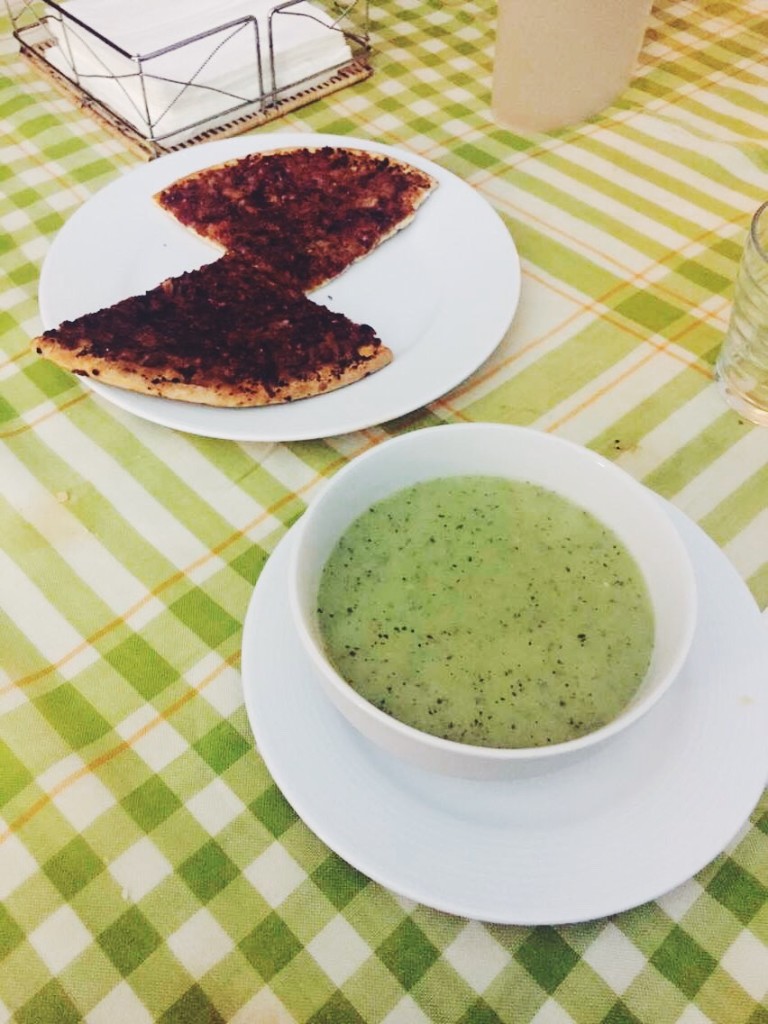
Photo by Veronica Kampfe
… But not any ordinary pizza. I devoured this meal and loved the slight hint of barbecue taste until my roommate told me there was tuna on it. After my initial shock of eating seafood without prior warning, I actually enjoyed it.
It’s definitely a bit… crunchier, but tastes great if you can get past it mentally. Also, don’t expect pizza to make an appearance during your drunchies — churros con chocolate is the move.
Paella
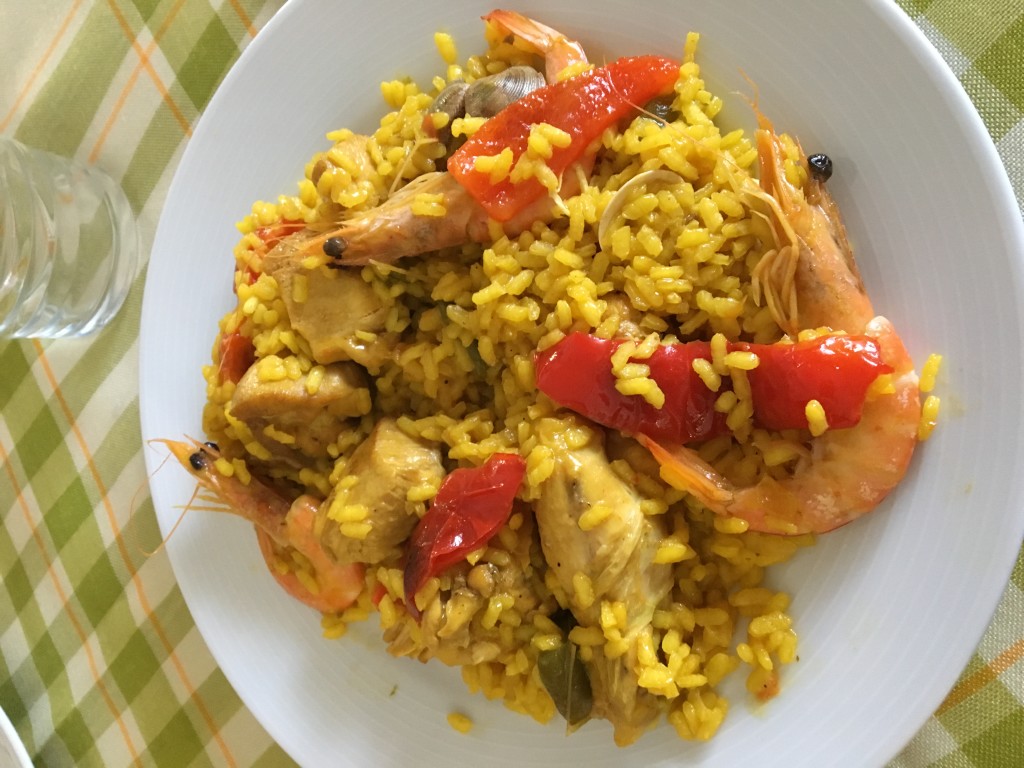
Photo by Veronica Kampfe
Okay, so technically this isn’t an American food at all. It is most definitely uniquely Spanish, but paella makes an appearance at a ton of American restaurants, and even sometimes at my very Italian family’s dinner table.
The paella in Spain is bomb, but be warned that the foods are not prepared the same as in the States. There will be shrimp in that paella — but there will also be the entire shell, legs, and eyes (don’t be like me and eat the spine by mistake).
Omelettes
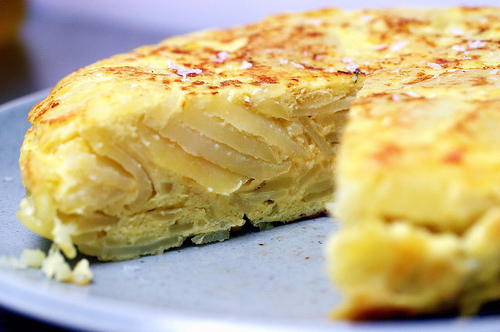
Photo courtesy of goabroad.com
The only thing that makes a Spanish omelette an omelette is the egg. There is no cheese, but somehow that isn’t a sad statement. Spanish “omelettes” are actually called tortillas and are filled with fried potatoes and onions with a crispy outer crust. They’re not served for breakfast, either — these are usually made for me at lunch or dinner time. And they are amazing.
Hamburgers
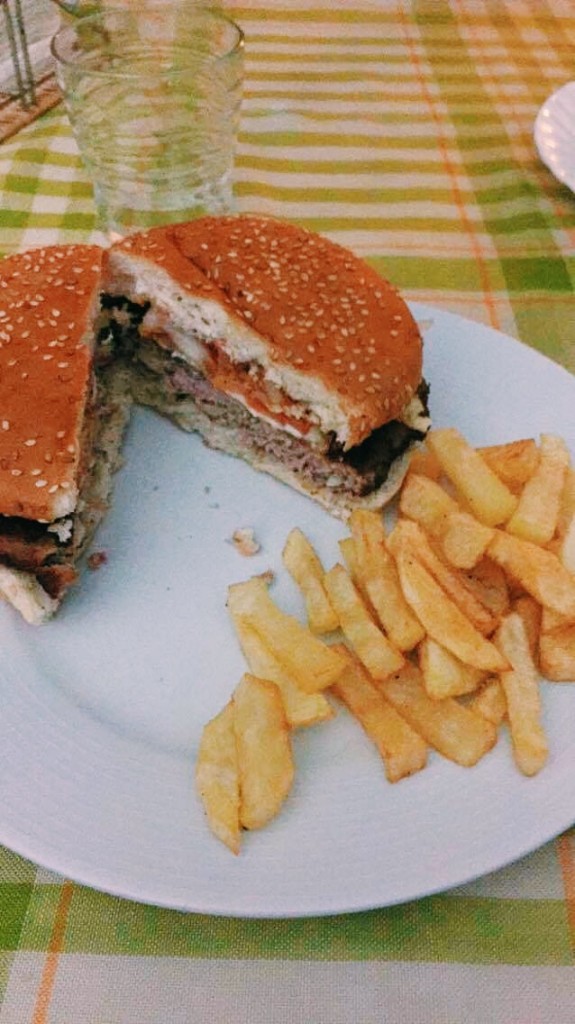
Photo by Micaela Moscato
My host mom was so excited to make a traditional American food for my roommate and I. She was very hesitant about the fact that it is very large and fuerte. As I said, Spanish people do not like large portions (I have not seen one obese person since being here).
I was a bit nervous for the burger because I was afraid it would be different, and it was — but in the best way possible. The burger was seasoned with onions and tasted fresher and healthier than any burger I have ever eaten in the States (how’s that for avoiding the abroad twenty?). My host mom even went to a butcher to get fresh meat.
Meatballs
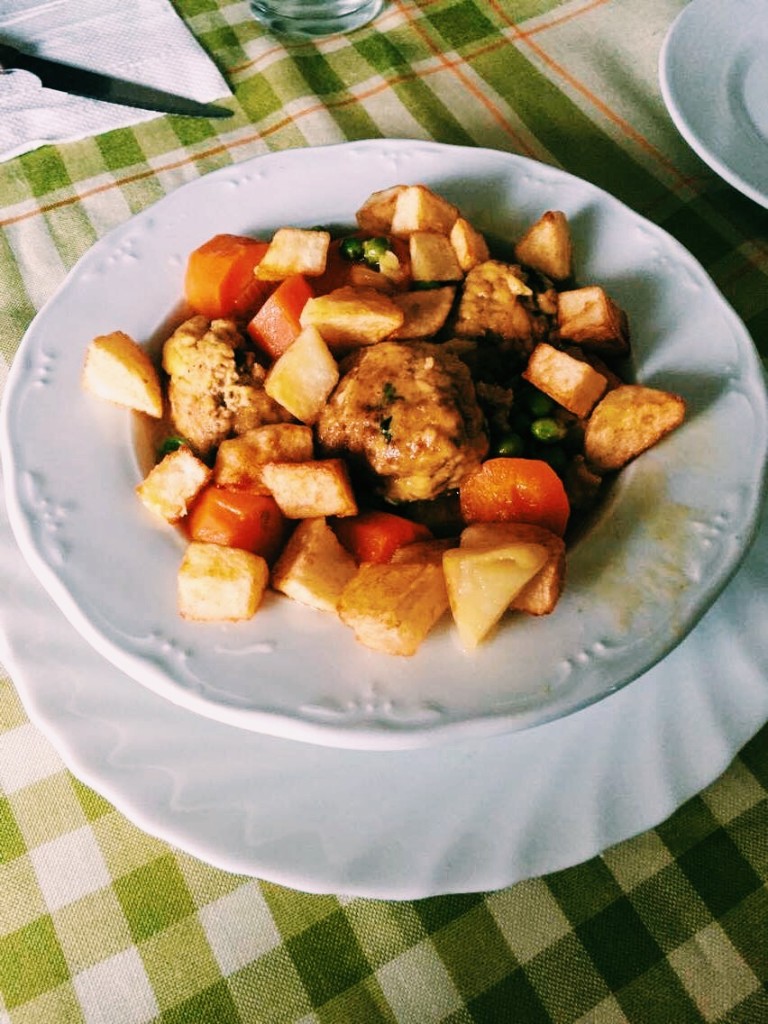
Photo by Micaela Moscato
Coming from an Italian family, I thought the only way a meatball could really be prepared was A) extremely large and B) in a red sauce. Imagine my surprise when I was handed a bowl of curry-colored soup with papas fritas, peas, and tan-colored tiny “meatballs.”
I loved it — much like Blanca’s hamburgesa, this meat was so well-seasoned, but the soupy sauce was equally as mouthwatering and tasted a lot like curry.
Ham

Photo courtesy of @jamongarabaya on Instagram
In the States, ham is simply a deli meat, or sometimes it gets bumped up to Christmastime dinner. For Spaniards, ham is essentially a delicacy. There are two kinds of pigs: Jamón serrano and Jamón ibérico.
Jamón Iberico de bellota is the delicacy here: the pigs are strictly fed acorns to make them incredibly fat, and the way to tell the difference is the hooves; theirs are black as opposed to the white hooves of the serrano pigs. Jamón ibérico de bellota is a must-try — the meat literally melts in your mouth. But be wary of the price tag: a back leg will cost a cool 850 Euro (that’s $950 USD).
Bread

Photo courtesy of @bigapanaderia on Instagram
Okay, so the bread in Spain is practically the same as in the States, if not a bit better. But, it’s the way that the bread is used here that is so incredibly different. With every single meal, a bowl of bread is placed on the table, and grabbing a piece induces warnings from my host mom not to get gorda! Yes, gorda means fat.
Sometimes bread will constitute an entire meal (for my less fortunate fellow travelers who are served an entire loaf for breakfast) or it will constitute an entire sandwich, with very little meat in between (for my more fortunate self, who gets packed a bocadillo every time she travels).

Photo by Veronica Kampfe
When doing anything new, it’s extremely hard to let yourself go in with little to no expectations. The food in Spain can be healthy and fresh, and the fact that I have a cute little Spanish woman running around making it for me probably makes it taste 10 times better. Once I let go of my American expectations of food, I began to love all of the new flavors — and, yes, smaller portions. Cheers to new food adventures.


